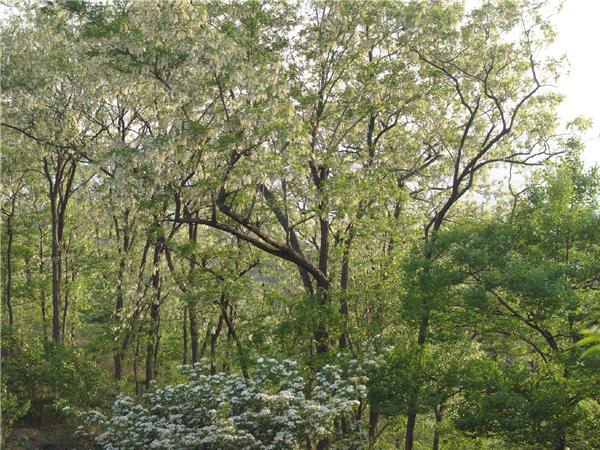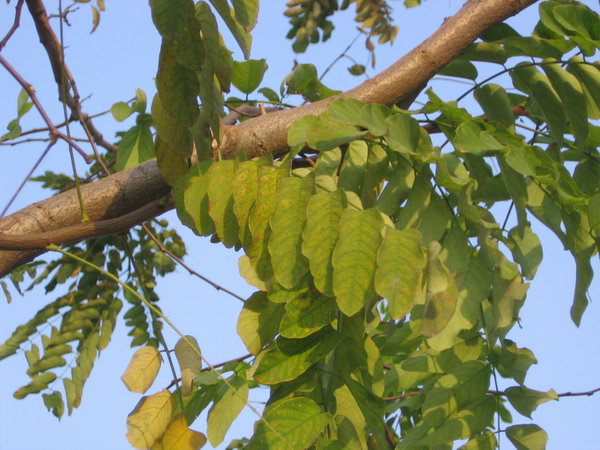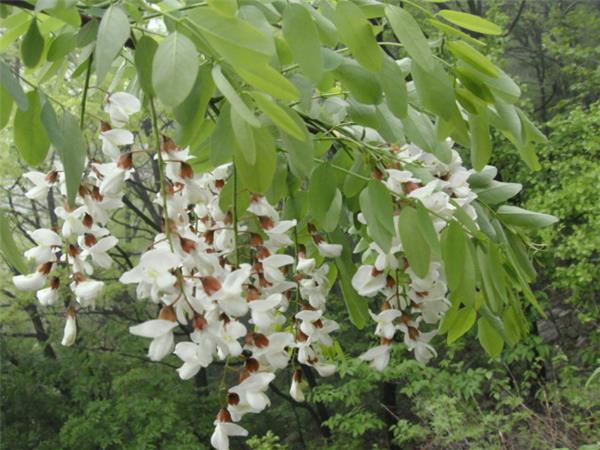[basic knowledge of Robinia pseudoacacia planting] how to plant black locust
Robinia pseudoacacia can be afforested by sowing, but it is usually sown in March, when the temperature is low, which is conducive to seed germination, and it is necessary to accelerate germination before sowing.

Seed treatment of Robinia pseudoacacia
Seed soaking: Robinia pseudoacacia seed coat thick and hard, poor water permeability, in order to improve the germination rate, shorten the germination period, seedling emergence neatly, seed treatment must be carried out before sowing. Pour hot water about 55 ℃ into the seed container, pour and stir until it is not hot. Soak overnight and use a sieve to remove the swollen seeds. The remaining unswollen hard seeds are treated with 85 ℃ of water for 1 or 2 times until most of the seeds are swollen. If there are hard seeds that are difficult to expand, wrap them in boiling water for 10 s, lift them quickly, and soak them in cold water overnight.
Sprouting: in order to make the seeds germinate evenly and emerge quickly, sprouting should be carried out before sowing. Put the swollen seeds in the bamboo basket, cover with wet towels or wet cloth, place them in a ventilated sunny or warm place and wash the seeds twice a day with clean water. After about 5 days, the seeds can be sown when the crack mouth of the seeds is exposed.
Sowing: generally sowing in March, when the temperature is low, which is conducive to seed germination. Before sowing, sow the containers containing nutritious soil with water to sink the soil. Some containers contain more nutritious soil. Pound a hole with a stick and sow the germinated seeds in the container with 3 seeds in each container. Then spread the fine sand evenly over the container and cover the soil so that the seeds are not visible.

Tending and Management of Robinia pseudoacacia seedlings
1. Seedling tending management when the seedlings grow to 3-4 cm, remove the sick and weak seedlings, spread the overdense seedlings, and fix the seedlings when they grow to 10-15 m. About 10 seedlings are retained for each extended rice, and must be staggered when double-row seedlings are fixed. There are about 12000 seedlings per mu.
two。 After the seedlings come out, they should be irrigated timely and appropriately according to the soil moisture, irrigating for 2 or 3 times a year. If you can't get up seedlings in autumn, you should irrigate one time of antifreeze water before overwintering. Urea can be applied once in the first ten days of June, 10 kg per mu. Water should be irrigated once after fertilization.
3. Spray 0.5%-1% Bordeaux solution or 1%-2% ferrous sulfate once every 10 days for prevention and control of standing blight at seedling stage. 40% dimethoate 800 times solution is used for aphid control. In order to make the seedlings grow evenly, the seedlings were cut once at the end of July. The big seedlings should be cut more than the young ones, and the height of the seedlings should not be less than 80 cm after cutting.
4. Before coming out of the nursery, the seedlings were cut dry at a distance of 15 to 20 meters from the surface, and then ploughed with "U" shaped seedlings, and the seedling depth should be no less than 18 to 20 meters from the main root. Seedlings should be selected at random, and seedlings that cannot be planted on the same day should be planted in time.

Shaping and pruning of Robinia pseudoacacia
Plastic surgery: under the condition of natural growth, Robinia pseudoacacia has strong branches and exuberant growth, often forming a wide oval crown, but most of the trunks are low and have too many branches, forming "small old trees". Shaping is to straighten the trunk, and the lateral branches competing with the trunk should be trimmed from the first winter or the second spring after planting, until the trunk height is more than 6m after 8 years, reaching the standard of civil wood.
Pruning: the time and amount of pruning should be determined according to the purpose of afforestation. For general afforestation, pruning should be carried out after the young forest is closed, and the greening and shelterbelt on the four sides should be pruned properly in the first 3 years in order to cultivate a higher trunk and prevent excessive shade. The trunk of Robinia pseudoacacia less than 2 years old is lower, and the vigorous and erect branches are generally selected as the trunk, and the rest are thinned according to different conditions. After the trunk is trimmed to a certain height according to the ratio of crown to stem, the sturdy competitive branches, overgrown branches, erect branches and some overdense lateral branches, drooping branches and dead branches in the upper part of the crown are removed.
Pruning sprouts: after pruning, the strong and long branches on the trunk or main side branches should be coring or cutting; for the sparse branches at the base of the trunk and the top of the trunk that starts in winter, the new buds and sprouts should be cut off as soon as possible. Pruning should be carried out in summer, from early June to early July, which has the advantages of small wound and fast healing, and generally no longer germinates a large number of branches, which is beneficial to the growth of young trees.

Finally, I would like to remind you that Robinia pseudoacacia likes light and warm and humid climate. it grows well in places with an average annual temperature of 8-14 ℃ and annual precipitation of 500-900 mm, so in order to ensure its healthy growth, we should also pay more attention to these conditions.
Related
- Wuhan Hospital Iron Tree Blooming Result Was Instantly Frightened by the Gardener Master
- Which variety of camellia is the most fragrant and best? Which one do you like best?
- What is the small blue coat, the breeding methods and matters needing attention of the succulent plant
- Dormancy time and maintenance management of succulent plants during dormancy
- Minas succulent how to raise, Minas succulent plant pictures
- What are the varieties of winter succulent plants
- How to raise succulent plants in twelve rolls? let's take a look at some experience of breeding twelve rolls.
- Attention should be paid to water control for succulent plants during dormant period (winter and summer)
- Watering experience of twelve rolls of succulent plants
- Techniques for fertilizing succulent plants. An article will let you know how to fertilize succulent plants.



